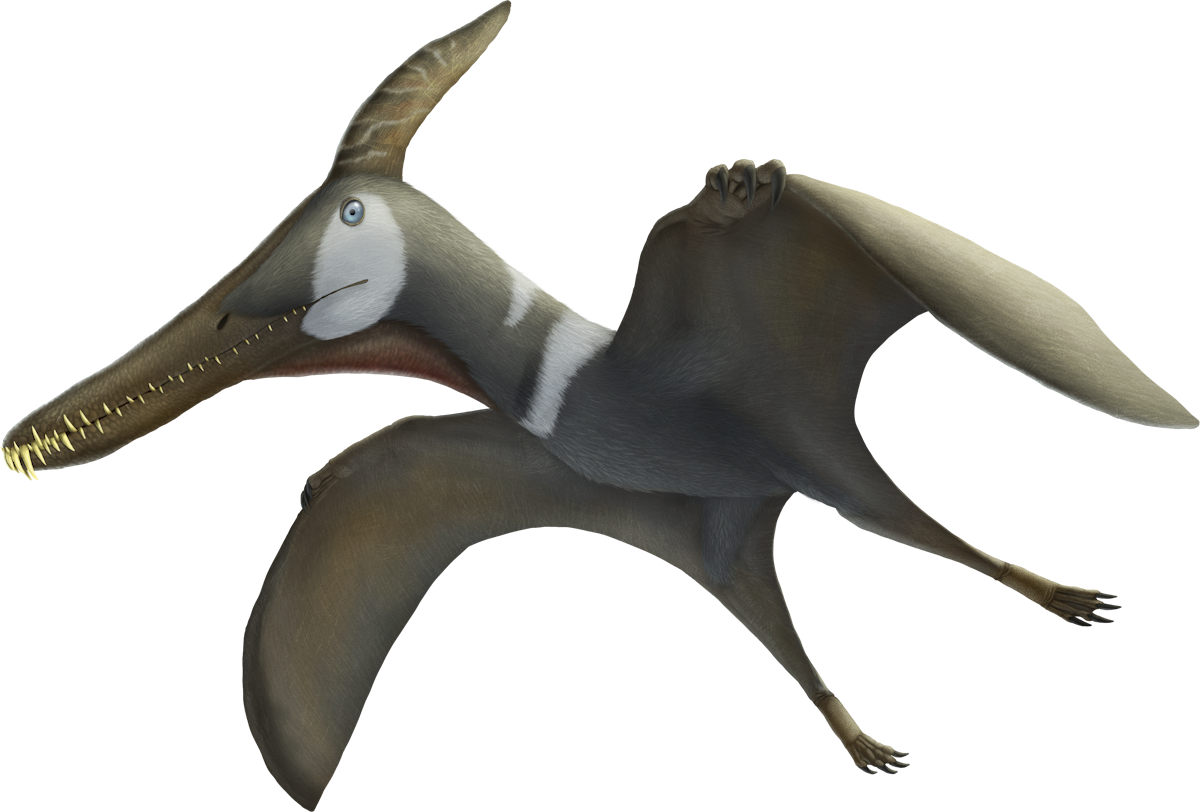Ludodactylus
Family

Ornithocheiridae


Family

Ornithocheiridae

The Lower Cretaceous Crato Formation of northeastern Brazil is home to a large number of well-preserved pterosaur species. Ludodactylus sibbicki, named in 2003 by Eberhard Frey, David Martill, and Marie-Céline Buchy, combines features previously found in unrelated pterosaur groups.
Ludodactylus is known from a single, nearly complete skull, missing only the distal end of the cranial crest. The skull is long and tapering, and does not have a crest of any kind on the snout. Instead, a backwards-pointing crest, superficially resembling what's found in Pteranodon longiceps, arises from the rear part of the skull. The full size of the crest is unknown, as the distal end extends beyond the limestone slab that the skull was found on. Unlike Pteranodon however, both the upper and lower jaws of Ludodactylus are lined with sharp, conical teeth. The teeth are longer and more closely spaced at the tips of the jaws, and become shorter and more widely spaced as they approach the jaw joint. There does appear to be a second, very low crest arising from the chin, similar to what is seen in tapejarids and ornithocheirids. The total length of the skull as preserved is about 66 cm (26 inches), and with a complete crest would probably be about one meter (39 inches). Although Ludodactylus is known solely from a skull, its wingspan can be estimated to be approximately four meters (13 feet) based on comparison to similar pterosaurs.
The name Ludodactylus is derived from the Latin word “ludus” meaning play, and the Greek word “dactylus” meaning finger. The name is reference to the many toys made prior to this discovery that combine a Pteranodon-like crest with a toothy smile; a condition otherwise unknown in any pterosaurs. The specific name honors prolific paleoartist John Sibbick.
Ludodactylus was initially described by Frey and colleagues as an ornithocheirid, a family of medium- to large-sized oceanic fish eaters that thrived in the Cretaceous. Ornithocheirids are short-tailed pterosaurs with long, narrow wings, somewhat short necks, and long skulls. The family includes ornithocheirines that have semi-circular crests on the very tips of the upper and lower jaws, anhanguerines with similar crests that are not at the tip of the snout, and several basal members without prominent crests at the jaw tips. A recent phylogenetic analysis performed by Brian Andres and Timothy Myers found Ludodactylus was in the ornithocheirid radiation, but fell just outside the clade Ornithocheirinae + Anhanguerinae.
The only known specimen of Ludodactylus suffered a fairly severe injury that probably led to its death. Preserved within the lower jaw is a piece of leaf that was apparently lodged in the animal's mouth, wedged between the jaw bone and tongue, and poking through the skin under the chin. Complete specimens of similar leaves are long, stiff, and lance-shaped. The leaf lodged in the Ludodactylus' mouth was broken and frayed on the end poking out under the chin, indicating that the animal tried to dislodge it, but was unsuccessful. This leaf probably led to an inability to eat, infection, and eventual death.
4 m (13 ft)



